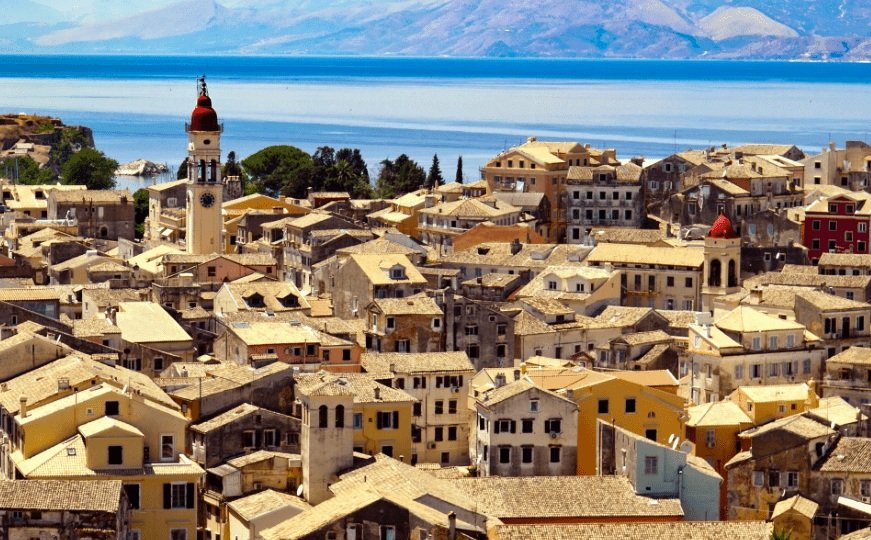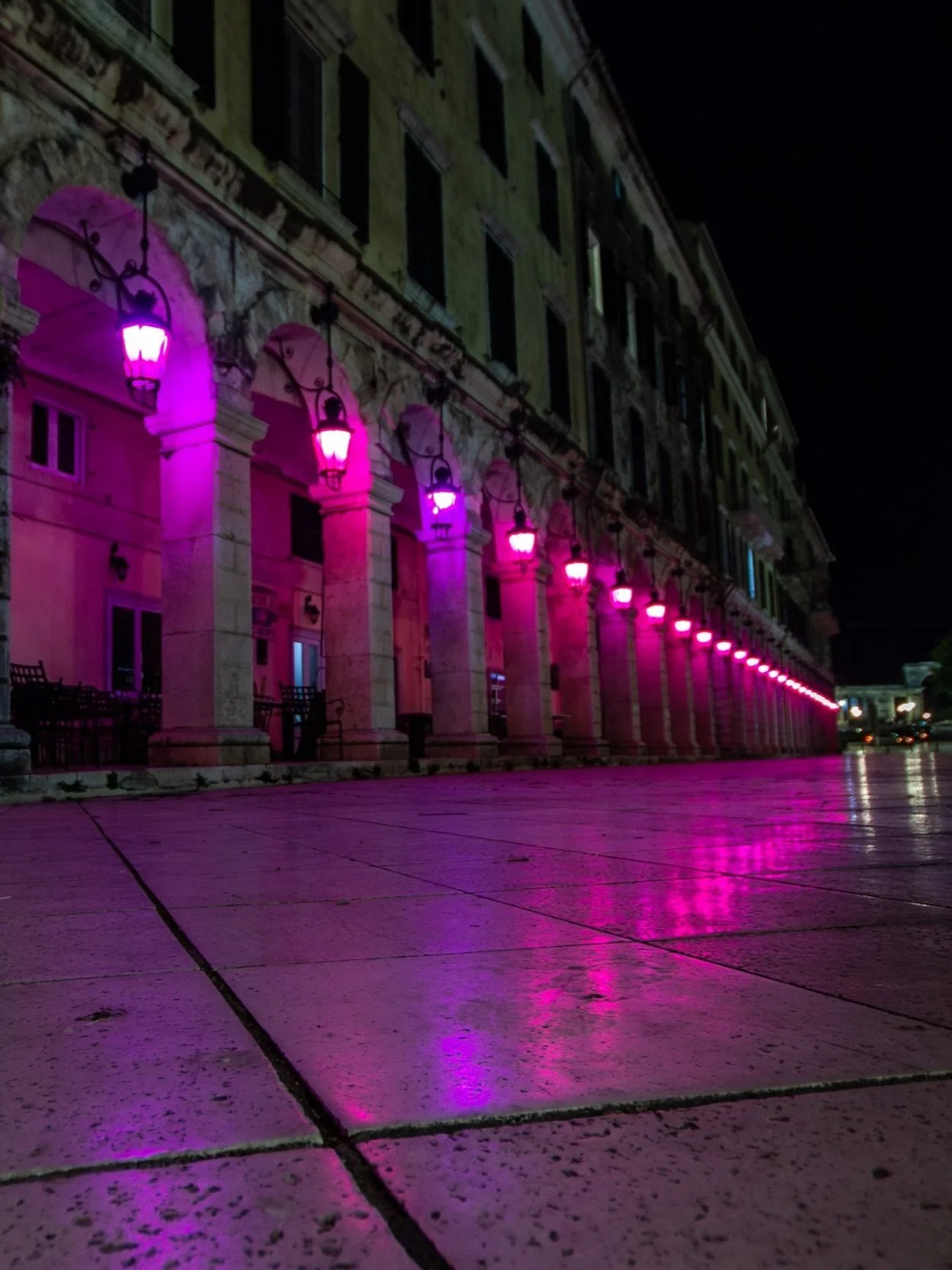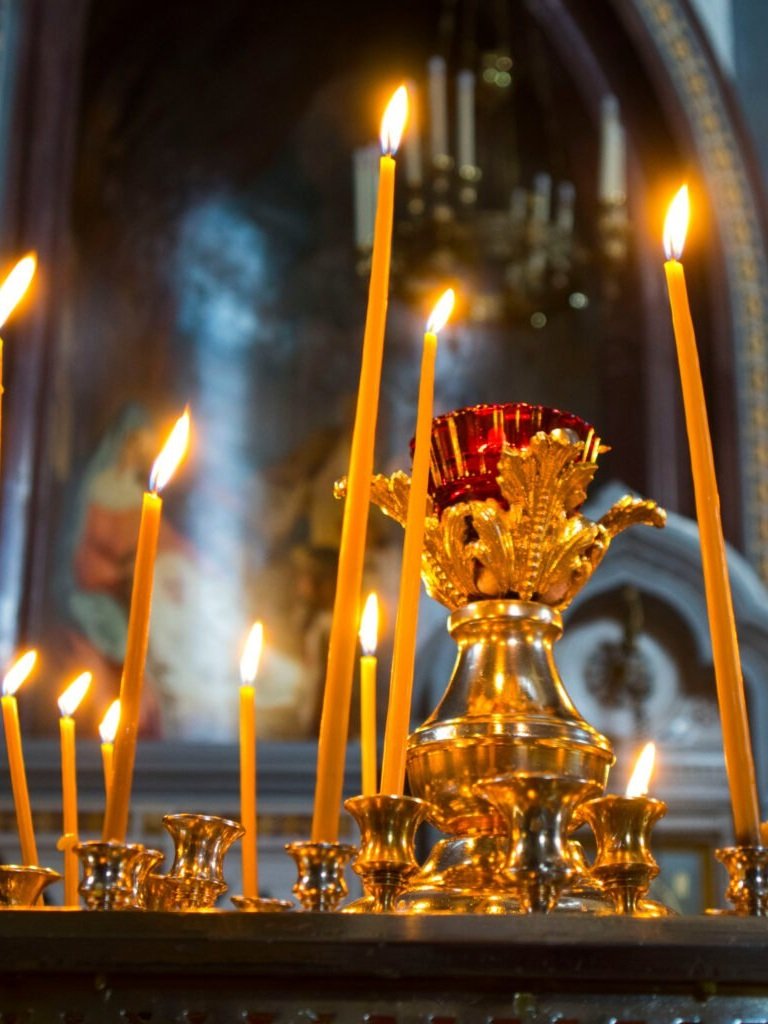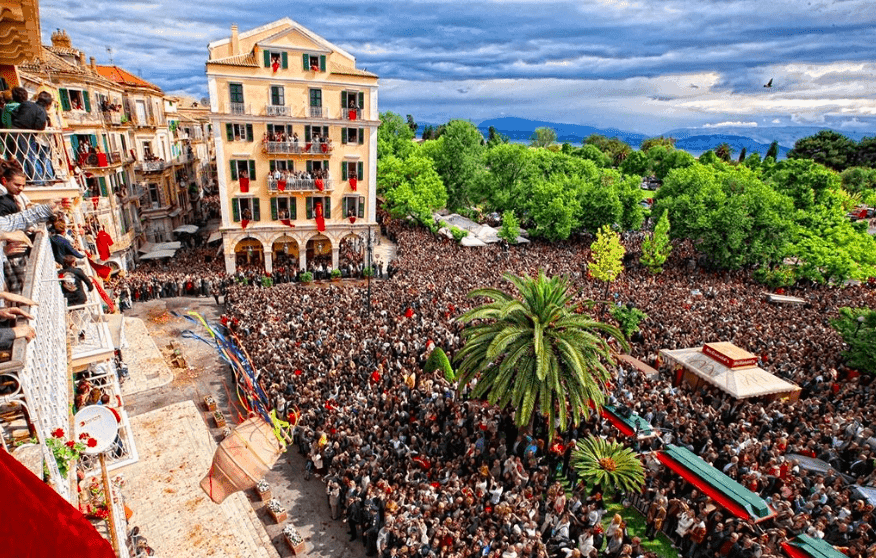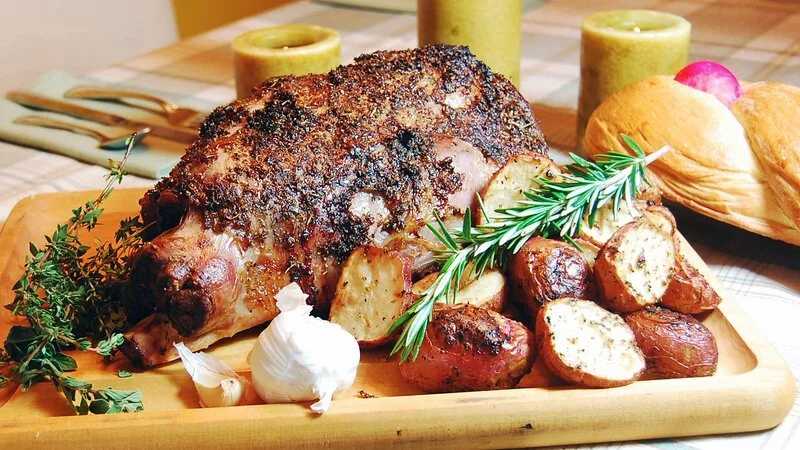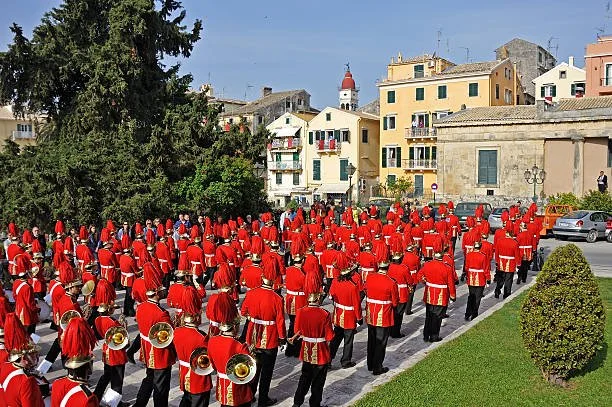Your Guide to Easter in Corfu
Easter in Corfu is often described as a once-in-a-lifetime experience. The island’s centuries-old traditions, Venetian influences, and a lively spirit make the Orthodox Holy Week here especially moving and memorable. From solemn liturgies to the famously vibrant “pot-throwing” ceremony, Corfu’s Easter celebrations unfold in a crescendo of sound, color, and excitement. Below is your comprehensive guide to experiencing this remarkable season, day by day.Don’t worry about sounding professional. Sound like you. There are over 1.5 billion websites out there, but your story is what’s going to separate this one from the rest. If you read the words back and don’t hear your own voice in your head, that’s a good sign you still have more work to do.
A Unique Experience
Venetian Influences & Local Traditions
Corfu was under Venetian rule for centuries, and that cultural heritage lives on, blending with Greek Orthodox customs. Brass bands, stately processions, and distinctive architectural backdrops come together in an Easter atmosphere unlike anywhere else in Greece.
Philharmonic Orchestras
The island boasts several famed philharmonic societies, and their orchestras play a central role in the Easter processions. Their stirring music lends a grand, emotional resonance to the week’s events.
Spectacular “Pot Throwing” (Botides)
Perhaps the most iconic Easter custom in Corfu is the tradition of throwing large clay pots filled with water off balconies on Holy Saturday morning. It’s said to symbolize the renewal of life and the welcoming of spring, and it is as festive (and noisy!) as it sounds.
Religious Devotion, Community Spirit
Corfiots take their Easter observances seriously, yet there’s a strong community feel throughout the week. Whether you’re standing shoulder-to-shoulder with locals at a procession or sampling Easter treats at a street vendor, you’ll find warmth and hospitality in every corner.
Timeline of Major Festivities (Overview)
Monday to Wednesday (Holy Week): Evening liturgies, quiet reflection, and final preparations.
Holy Thursday: Iconic church services and the blessing of the Holy Gifts.
Good Friday: Solemn Epitaphios (bier) processions through the streets, accompanied by funeral marches played by philharmonic bands.
Holy Saturday: Early morning litany of St. Spyridon’s relics, followed by the famous pot-throwing tradition at 11:00 a.m.
Easter Sunday: The joyous Resurrection feast, family gatherings, and traditional Easter meals (like spit-roasted lamb).
“Easter in Corfu isn’t just something you watch—it’s something you feel. Church bells ring loud, the air smells like candles and spring flowers, and drums echo through the streets. It’s more than a holiday. It’s a story, and you’re part of it.”
Day-By-Day Guide
Monday Before Easter (Holy Monday)
Though the most spectacular events come later, Holy Monday sets the reflective tone for the week. Churches hold evening services called Great Compline or Nymphios.
Where to Go
Old Town churches (e.g., Saint Spyridon Church, Panagia Spiliotissa).
Wander along the Old Town’s narrow streets to soak in the quiet anticipation.
Traffic is still moderate at this point, so you can drive and park within walking distance of Old Town. Plan for a brief evening stroll to explore the calm before the busier days.
Tuesday Before Easter (Holy Tuesday)
Another evening service called the Hymn of Kassiani, a beautiful and reflective piece sung in churches. This is an ideal day to observe local customs and religious devotion on a more intimate scale.
Where to Go:
Smaller neighborhood churches to experience the service in a more local setting.
Corfu Town for a relaxing coffee at the Liston before attending the service.
Parking in and around the town remains manageable. Public transport is reliable, but if you’re staying close by, consider walking to fully experience the ambiance.
Wednesday Before Easter (Holy Wednesday)
A special anointing service (Holy Unction) is typically performed in many churches, offering blessings and healing prayers.
Where to Go:
Church of Saint Spyridon: This central church often sees large numbers of locals attending evening prayers.
Traditional tavernas: After services, sample Lenten-friendly Corfiot dishes (fish, vegetables, and olive-oil based recipes).
The traffic starts to pick up. If possible, park outside the main historical center and walk in. Alternatively, use the Blue Bus (local city bus) to reach the Old Town.
Thursday Before Easter (Holy Thursday)
Holy Thursday marks the last day of quiet reflection before the intense events of the weekend. Churches hold the Twelve Gospels service in the evening, commemorating the Passion of Christ.
Where to Go:
Any prominent church in Corfu Town or the outskirts. Observing this service in the Old Town can be especially atmospheric given the historical setting.
If you’re an early riser, it’s worth strolling around the markets in the morning to see locals picking up last-minute Easter supplies (candles, dyed red eggs, sweet breads).
The roads become busier as visitors arrive. Plan for public parking near the port or in designated municipal lots, then walk to avoid traffic congestion in the narrow streets.
Good Friday (Holy Friday)
Good Friday is known for the solemn Epitaphios processions—churches across Corfu Town and the island carry a symbolic bier of Christ through the streets, often accompanied by the island’s philharmonic orchestras playing solemn funeral marches.
Major Events:
Multiple processions throughout the afternoon and evening, each departing from a different church.
The day culminates with Saint Spyridon Church’s late-night procession.
Where to Go:
Spianada Square & Liston: Prime viewing spots for the main processions and the philharmonic bands.
Old Town streets: Each neighborhood has its own Epitaphios. Check local schedules (often posted near church doors or available at tourist info points).
Expect road closures and major traffic diversions in Corfu Town from mid-afternoon onwards. If possible, head to the Old Town in the morning, park once, and stay on foot. Public buses often run special schedules.
Holy Saturday
Morning Litany of St. Spyridon
Around 9:00 a.m.: The relics of Saint Spyridon are carried in a procession through Corfu Town. It’s considered a sacred event, accompanied by the island’s oldest philharmonic society playing solemn music.
The “Pot Throwing” (Botides) at 11:00 a.m.
Locals hurl large clay pots filled with water (or simply empty) from their balconies onto the streets below. This dramatic spectacle symbolizes the renewal of life, as well as Corfiot gratitude for nature’s bounty in springtime.
Where to Be:
Liston Arcades & Spianada Square: Central vantage points to watch the pots crashing with an echoing roar.
Arrive early (by 10:00 a.m.) to secure a good viewing spot.
Midnight Resurrection Service
Late on Saturday night, people gather in church courtyards and town squares for the Resurrection proclamation. At midnight, fireworks and bell-ringing announce Easter.
Where to Be:
Spianada Square or Saint Spyridon Church are popular for the grandest celebrations.
Expect heavy foot traffic all day. Plan to be in town early and stay in or near Old Town accommodations if you can.
Easter Sunday
After a week of solemnity and tradition, Easter Sunday is all about celebration and feasting. Families host festive meals, often featuring lamb on the spit, magiritsa soup (an offal and lettuce soup), and red-dyed eggs.
Where to Go:
Villages Across Corfu: Many traditional tavernas offer special Easter menus; consider visiting a village to see authentic Greek hospitality.
Beachfront Areas: If the weather is fine, it can be lovely to enjoy the sea breeze. Try areas like Paleokastritsa or Dassia for a post-lunch stroll.
Roads can be somewhat quieter on Easter Sunday morning, but many local businesses shut down in the afternoon. If you plan on dining out, make reservations in advance or ask your hotel to help secure a table at a local taverna.
Tips for Getting Around During the Festivities
Parking & Traffic
Arrive Early: The best way to beat the crowds is to arrive a few hours before major events.
Municipal Parking: Look for designated parking lots near the port or the edges of Old Town. More parking information here.
Street Closures: Many central streets close off during processions (especially Good Friday and Holy Saturday). Plan for walking longer distances.
Public Transport
Blue Buses (City Routes): These run frequently in and around Corfu Town, but expect altered routes and schedules during processions.
Green Buses (Island Routes): Useful if you’re staying outside the city or want to visit nearby villages.
On Foot
Corfu Town’s center is best explored on foot, especially during Holy Week. The narrow streets and pedestrianized areas make walking the quickest (and most immersive) option.
Where to Stay
Old Town Lodging: Ideal if you want immediate access to the main events.
Nearby Neighborhoods or Resorts: If you prefer a quieter base, look into the suburbs of Corfu Town (e.g., Garitsa, Kanoni) or nearby seaside areas like Benitses.
Ideal Places to Spend Each Day
Early Week (Mon–Wed): Explore the Old Town calmly, attend smaller church services, and soak in pre-Easter ambiance.
Later Week (Thu–Sat): Center yourself around the Old Town for the core processions (Good Friday) and the morning pot throwing (Holy Saturday).
Easter Sunday: Venture out to a local village or a seaside town for a festive lunch, or stay in Corfu Town for a special meal at a historic restaurant.
“Imagine standing in Corfu’s Old Town as the first light of morning spills over the rooftops. Then—boom! The silence is shattered as thousands of clay pots crash onto the streets below, welcoming the joy of resurrection. If there is a place where history, faith, and sheer exuberance meet, it is here.”
Closing Thoughts
Easter in Corfu is a rich tapestry of solemn rituals, joyous traditions, and a communal spirit that envelops everyone, visitor or local. From the reflective early-week services to the thrilling crash of clay pots on Holy Saturday, every day brings a new layer to the tapestry of sights, sounds, and tastes. By following this guide—arriving early, planning your transport, and embracing the local customs—you’ll create memories that last a lifetime.
Kalo Pascha (Happy Easter) from Corfu!
